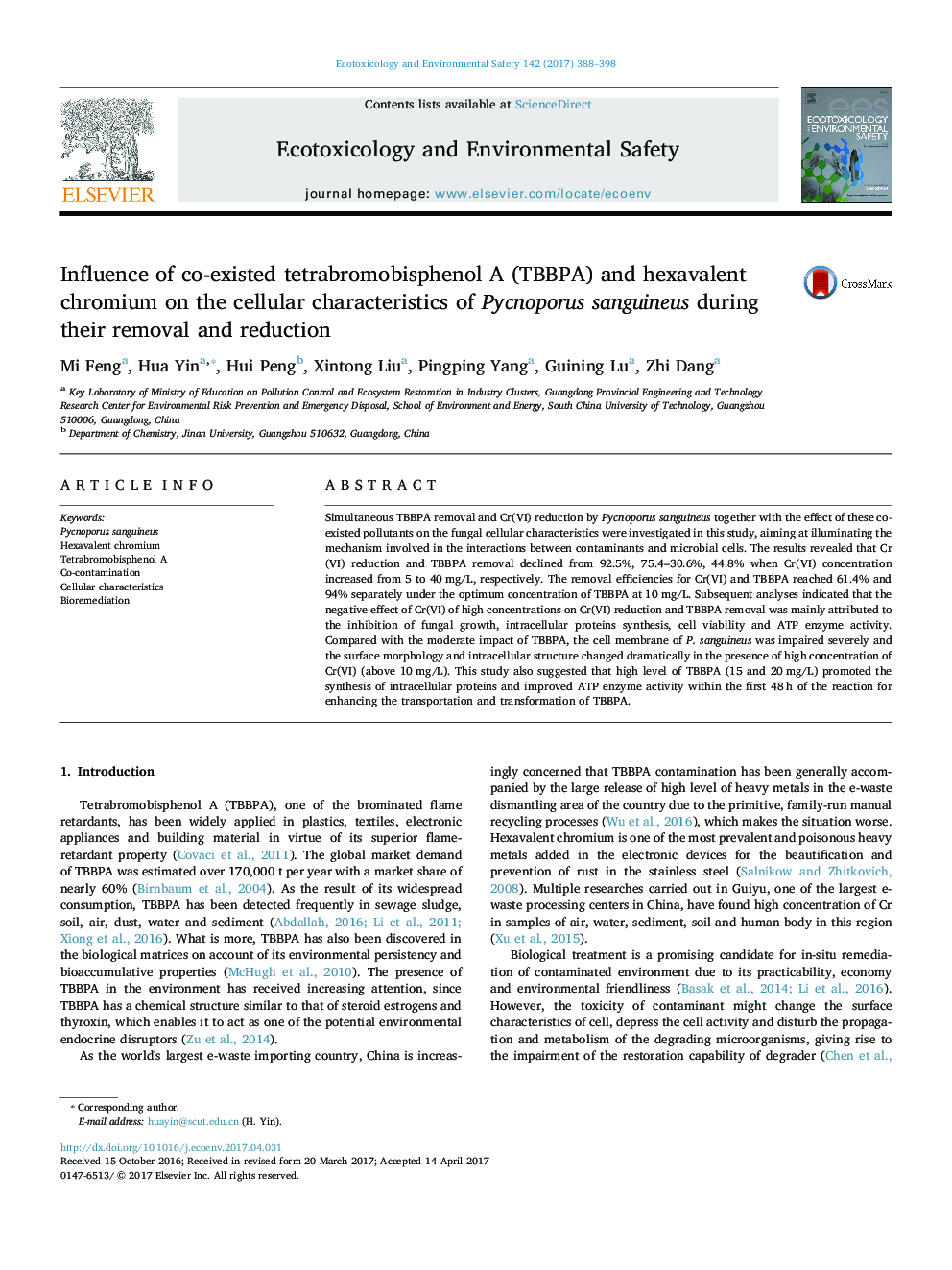| Article ID | Journal | Published Year | Pages | File Type |
|---|---|---|---|---|
| 5747637 | Ecotoxicology and Environmental Safety | 2017 | 11 Pages |
Abstract
Simultaneous TBBPA removal and Cr(VI) reduction by Pycnoporus sanguineus together with the effect of these co-existed pollutants on the fungal cellular characteristics were investigated in this study, aiming at illuminating the mechanism involved in the interactions between contaminants and microbial cells. The results revealed that Cr(VI) reduction and TBBPA removal declined from 92.5%, 75.4-30.6%, 44.8% when Cr(VI) concentration increased from 5 to 40Â mg/L, respectively. The removal efficiencies for Cr(VI) and TBBPA reached 61.4% and 94% separately under the optimum concentration of TBBPA at 10Â mg/L. Subsequent analyses indicated that the negative effect of Cr(VI) of high concentrations on Cr(VI) reduction and TBBPA removal was mainly attributed to the inhibition of fungal growth, intracellular proteins synthesis, cell viability and ATP enzyme activity. Compared with the moderate impact of TBBPA, the cell membrane of P. sanguineus was impaired severely and the surface morphology and intracellular structure changed dramatically in the presence of high concentration of Cr(VI) (above 10Â mg/L). This study also suggested that high level of TBBPA (15 and 20Â mg/L) promoted the synthesis of intracellular proteins and improved ATP enzyme activity within the first 48Â h of the reaction for enhancing the transportation and transformation of TBBPA.
Keywords
Related Topics
Life Sciences
Environmental Science
Environmental Chemistry
Authors
Mi Feng, Hua Yin, Hui Peng, Xintong Liu, Pingping Yang, Guining Lu, Zhi Dang,
